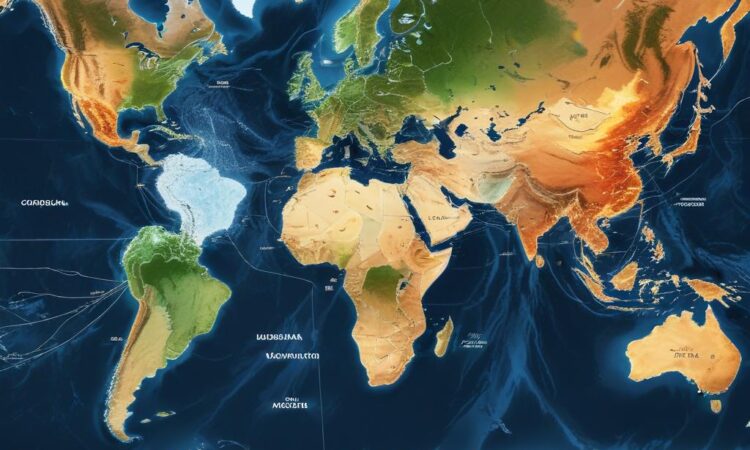Global Supply Chain Disruptions and Resilience
While supply chain disruptions have eased somewhat since the peak of the pandemic, significant vulnerabilities persist, posing ongoing challenges to global trade and economic stability. The interconnected nature of the global economy means that disruptions in one area can quickly ripple outwards, affecting businesses and consumers worldwide. The situation remains complex and multifaceted, demanding a proactive and multifaceted approach to building more resilient supply chains.
The Lingering Impact of Geopolitical Instability
The ongoing war in Ukraine continues to significantly disrupt global supply chains. Ukraine and Russia are major exporters of agricultural products, energy resources, and other crucial commodities. The conflict has led to soaring energy prices, fertilizer shortages, and disruptions to food supplies, impacting countless nations and exacerbating existing inflationary pressures. The uncertainty surrounding the conflict’s duration and outcome further complicates long-term planning and investment in global supply chains.
Beyond Ukraine, geopolitical tensions in other regions also contribute to supply chain instability. Trade disputes, sanctions, and political instability can all lead to unexpected disruptions in the flow of goods and services. Businesses are increasingly facing the challenge of navigating a complex geopolitical landscape, requiring sophisticated risk management strategies and diversification of their supply sources.
The Growing Threat of Extreme Weather Events
Climate change is intensifying the frequency and severity of extreme weather events, such as floods, droughts, heatwaves, and hurricanes. These events can disrupt transportation networks, damage infrastructure, and destroy crops, significantly impacting supply chains. Ports can be rendered inoperable, factories may be forced to close, and the availability of raw materials can be severely affected. The increasing unpredictability of weather patterns adds another layer of complexity to supply chain management, requiring businesses to develop robust contingency plans and invest in resilient infrastructure.
The vulnerability of supply chains to extreme weather is particularly acute in regions already facing economic or political instability. These regions often lack the resources and infrastructure needed to quickly recover from such events, leading to prolonged disruptions and exacerbating existing challenges.
The Push for Supply Chain Diversification and Resilience
In response to the ongoing challenges, there is a growing emphasis on building more resilient and diversified supply chains. This involves reducing reliance on single sources of supply, geographically diversifying production, and investing in more robust infrastructure. Governments and businesses are actively exploring various strategies to improve the resilience of their supply chains, including:
- Nearshoring and Reshoring: Relocating manufacturing closer to home markets to reduce transportation costs, lead times, and geopolitical risks. This strategy, however, may involve trade-offs in terms of labor costs and access to specialized skills.
- Regionalization: Focusing on establishing supply chains within specific geographic regions, reducing reliance on long-distance transportation and improving supply chain visibility and control. This approach, often favoured in Asia, is particularly relevant for industries with high transportation costs and short product lifecycles.
- Digitalization: Utilizing technology such as blockchain, AI, and IoT to improve supply chain visibility, track goods in real-time, and optimize logistics. This can enhance responsiveness to disruptions and improve overall efficiency.
- Inventory Management: Implementing advanced inventory management techniques to optimize stock levels, reduce waste, and mitigate the impact of disruptions. This involves balancing the need for sufficient inventory to meet demand with the cost of holding excess stock.
- Supplier Relationship Management: Building strong relationships with suppliers to ensure reliable and timely delivery of goods and services. This involves collaborative planning, information sharing, and risk mitigation strategies.
- Risk Assessment and Mitigation: Regularly assessing potential supply chain risks, developing mitigation strategies, and implementing contingency plans to minimize the impact of disruptions. This includes identifying potential vulnerabilities and developing alternative sourcing strategies.
Regionalization of Supply Chains in Asia: A Case Study
The trend towards regionalization of supply chains is particularly pronounced in Asia, driven by a combination of factors including the desire to reduce reliance on long-distance shipping, mitigate geopolitical risks, and tap into growing regional markets. Several initiatives are underway to facilitate this trend, including the development of regional trade agreements, investments in regional infrastructure, and the promotion of regional industrial clusters. This regionalization effort, however, presents its own set of challenges, such as the need for harmonization of standards and regulations across different countries, and the potential for interdependencies within the region to create new vulnerabilities.
The success of regionalization efforts will depend on the ability of Asian countries to collaborate effectively, address infrastructure gaps, and create a stable and predictable regulatory environment. The ongoing efforts to improve connectivity within the region, through investments in transportation and communication infrastructure, are crucial for facilitating the smooth flow of goods and services within regional supply chains.
The shift towards regionalized supply chains in Asia also highlights the importance of fostering sustainable and ethical practices throughout the supply chain. This includes ensuring fair labor practices, environmental protection, and responsible sourcing of materials. As businesses increasingly focus on their environmental, social, and governance (ESG) performance, there is growing demand for transparency and accountability throughout the supply chain.
The challenges facing global supply chains are multifaceted and require a comprehensive approach involving governments, businesses, and international organizations. Continued cooperation, investment in resilient infrastructure, and the adoption of innovative technologies will be crucial for mitigating the impact of future disruptions and building more sustainable and resilient supply chains for the future.
The ongoing evolution of global supply chains necessitates continuous adaptation and innovation. Businesses must remain agile, responsive to changing circumstances, and actively engage in strategies to enhance resilience and sustainability.
Further research and analysis are needed to fully understand the complexities of global supply chains and develop effective strategies for improving their resilience. International collaboration and information sharing are critical for addressing the challenges and opportunities presented by the evolving global landscape.
Ultimately, the goal is to create supply chains that are not only resilient to disruptions but also sustainable and equitable, contributing to both economic prosperity and global stability.

